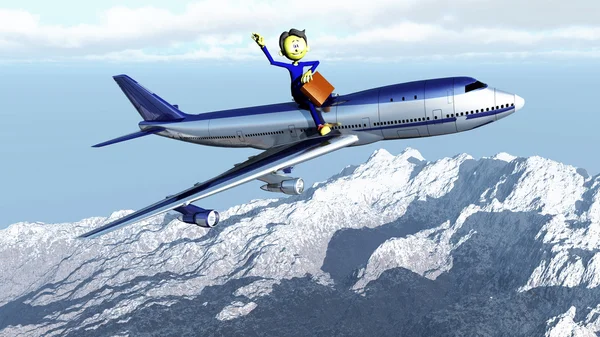A career as a pilot offers excitement, dynamic experience, and rewarding opportunities. From working on commercial airliners to piloting small planes and helicopters, the aviation industry provides a range of career paths. With the proper training and licenses, you can pursue a career flying, managing airports or aircraft operations, or even engineering. It’s a great way to explore the world while having an exciting and fulfilling job.
Aviation careers offer many exciting opportunities to grow and succeed. Benefits may include competitive salaries, attractive pension plans, and a dynamic, team-oriented work environment. In addition, many employers also offer medical coverage and other perks, such as travel and tuition assistance. Working in the aviation industry allows individuals to work with the latest technology and contribute to the growth and development of the global aerospace industry.
What comes with the dream of flying?
Airline and commercial piloting is an exciting and rewarding occupation. With the retirement of older pilots and the need for flexibility in scheduling, the industry is expected to experience high demand for these professionals in the coming years. Those who enter this field can earn an above-average salary for their efforts and dedication to mastering the skill set of flight. With ongoing advancements in technology, the opportunities for growth in this field are endless.
Piloting can risk your physical and emotional well-being due to fatigue, medication, and stress. To help manage these risks, the FAA’s IM SAFE checklist can be used to assess personal risk factors. IM SAFE includes questions about illness, medication, stress, alcohol, fatigue, and emotions so pilots can determine their safety before taking off.
What does it need to become a pilot?
You must log significant flight hours and obtain your pilot certifications as a pilot. However, you can gain experience while training as a pilot-in-training. This involves flying under the guidance of an instructor, who will teach you the basics of flight and prepare you for more advanced operations. With dedication, you can become an in-demand pilot.
- Piloting is a job where a high level of skill is required. Pilots must think quickly and be prepared to make decisions in a split second. They must pay close attention to details, such as following safety protocols and monitoring the flight’s progress. The responsibility of taking care of passengers and crew members weighs heavily. Despite the stress and hard work, a successful pilot can enjoy a career full of rewards.
- Pilots may spend days or multiple nights away from home, as flight assignments can vary greatly. Commercial pilots often have more flexible hours, but their schedule is usually irregular. Pilots usually have preferred routes and hours of work that are given out based on seniority. Being a pilot involves a lot of commitment, especially when traveling away from home for extended periods.
- Pilots must dedicate themselves to continuous learning, as the aerospace industry is constantly changing and advancing. This means that education and training costs are necessary, though they may be high. But the rewards are worth it, as pilots can stay up-to-date with new technology and industry trends, ensuring they remain competitive and the flying public stays safe.
The cost involved in becoming a pilot
To become a commercial airline pilot, you must invest in tuition and flight training. A flight school cost can vary significantly, from as low as $60,000 to up to $100,000. It depends on your chosen path, such as enrolling in a flight school or university degree program. Consider your budget and weigh your options carefully before committing to a program.
The most common certifications and ratings required are the Private Pilot License (PPL), Airline Transport Pilot License (ATPL), and Instrument Rating (IR). The PPL requires 40 flight hours, the ATPL requires 1,500, and the IR requires 40. Depending on the specific goals and the instructor’s rate, the cost of flight instruction and rental planes can range from thousands to tens of thousands. In addition, students should be ready to pay for any applicable medical exams, testing, and FAA license and registration fees.
Conclusion
Pilots continue to hone their skills through continuous training and optimization. They are aware of the ever-changing nature of the industry and stay educated on the latest advancements in technology. This ensures that they remain at the forefront of aviation safety and remain highly capable and reliable pilots. As a result, pilots can confidently and safely navigate the skies and execute the highest standards of professionalism. A career as a pilot can be a costly endeavor due to the necessary education and training. However, the investment can pay off with a higher salary and the potential for advancement opportunities. Some employers may even provide further training for their pilots, making the financial commitment more manageable. With the proper preparation, becoming a pilot can be a rewarding experience with career satisfaction and financial payoff.




